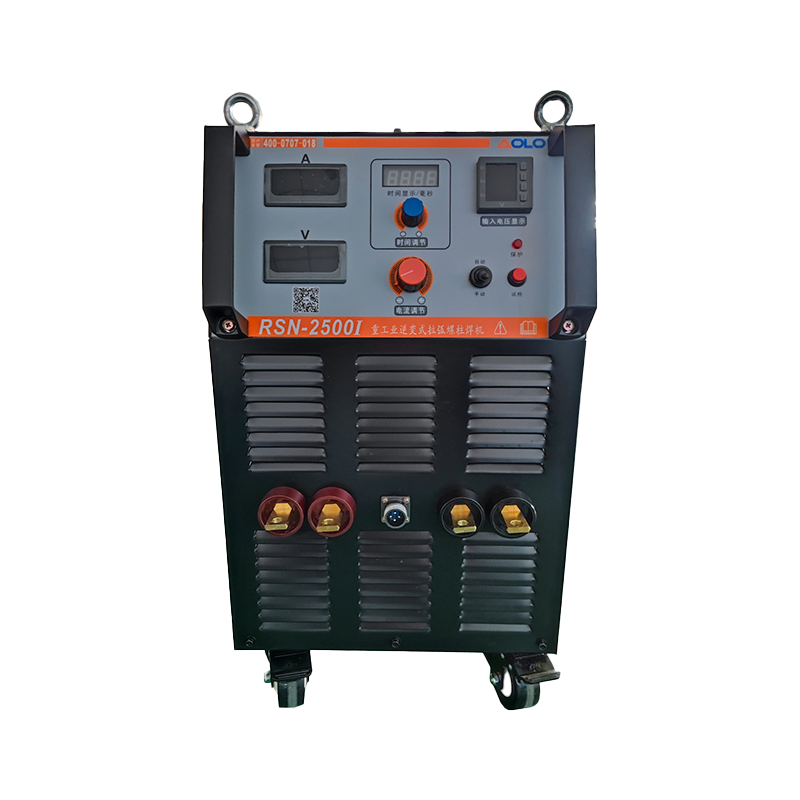NBC-315S/NBC-350S 380V 350A IGBT Inverter Portable welder 2T/4T MIG/MAG/MMA(GMAW/SMAW)
Cat:Gas shielded welding machine
1、The welding machine is small and can be connected to a wire feeder. ...
See DetailsThe degree of automation of the stud welding machine has a significant effect on improving production efficiency. Specifically, the automation system can help improve production efficiency, reduce the error rate of manual intervention, and reduce production costs through multi-faceted optimization. The following are several major effects of automation on production efficiency:
1. Improve production speed
Automated spot welding systems can complete welding tasks faster than manual operations. Automated equipment can perform spot welding at a set speed without being affected by factors such as operator fatigue, thereby improving the production efficiency of each cycle. For example, in the same amount of time, the automated system may complete more welding operations.
2. Stability and consistency
Automated systems can ensure that welding parameters (such as current, voltage, time, pressure, etc.) are always consistent, which is crucial to maintaining the quality of each weld. Due to the reduction of differences in human operations, automation can provide higher consistency and stability, reducing fluctuations in product quality.
3. Reduce human errors
During manual operation, welding quality may be affected by operator skills, fatigue or negligence. Automated spot welding machines automatically complete operations through preset programs, reducing welding defects or unqualified products caused by human errors and avoiding interference from human factors.
4. Improve process flexibility
Modern automated spot welding systems can usually be quickly switched and adjusted to adapt to different rivet sizes, materials, welding positions and process requirements. In this way, the production line can flexibly respond to different product requirements and reduce the time of manual adjustment of equipment, making the production process more efficient.

5. Reduce the number of operators
Automated systems can replace some or all manual operations, reducing the dependence on skilled operators, especially in large-scale production, the cost advantage of automated production lines is becoming more and more obvious. Reducing the need for manual labor not only saves labor costs, but also optimizes factory resource allocation.
6. Improve the continuity of the production line
Automated spot welding systems can operate continuously for 24 hours, which is usually impossible for manual operations. Through automation, the production line can achieve uninterrupted work, thereby greatly improving production efficiency and maintaining production stability during high demand periods.
7. Data monitoring and optimization
Automated systems can track various parameters (such as current, time, welding pressure, etc.) in the welding process in real time and record data through embedded sensors and monitoring software. These data can help production managers analyze production efficiency, optimize welding parameters, and identify potential production bottlenecks, thereby conducting more sophisticated production management and process optimization.
8. Reduce material waste
Automated spot welding systems can accurately control each welding process, reducing the waste of rivets and substrates caused by improper operation. For example, excessive welding current may cause material damage, and the automated system can more accurately control the current output to ensure the optimal use of materials.
9. Reduce maintenance costs
Automated spot welding systems have high accuracy and repeatability, and the failure rate of equipment is usually low. Through regular preventive maintenance and system self-inspection, automated systems can reduce downtime and maintenance costs. Compared with manual operation, automated equipment usually has a longer service life.
The application of automation in spot welding processes can not only improve production efficiency and reduce production costs, but also improve welding quality and product consistency. Especially in mass production, the advantages of automated equipment are particularly obvious, which can significantly shorten the production cycle and improve the competitiveness of products.
Contact Us